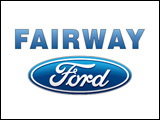Choosing a multivitamin from the vast assortment of products available on the market can be incredibly overwhelming and tougher than ever. Currently, multivitamin supplements can be divided into two main categories: synthetically-made which contain USP isolates and whole-food based. The disheartening truth is that the majority of multivitamin formulations marketed as whole-food products are in fact USP isolates either disguised by added food powders or fermented with plant based ingredients. USP isolates are considered natural yet; most are processed from and with chemicals and often times come from genetically modified organisms (GMOs) or other undesirable synthetic materials. True whole-food based multivitamins are made from certified organic, non-GMO plants such as fruits, herbs and botanicals. Knowing what to look for in a multivitamin can simplify the process significantly and help sort through the gimmicks.
Until recently, the technology to extract and concentrate standardized amounts of vitamins and minerals directly from plants did not exist. Simply put, there was no consistency between batches of extracted nutrients. The amount of vitamins and minerals in plant foods can vary greatly based on many different factors such as climate, season, growing and harvesting processes and much more. This made it difficult to have exact amounts of each nutrient in every tablet. For this reason, most multivitamin formulas on the market are made with or start with USP isolates which are easily standardized and quantified.
In the last decade, scientists have been able to develop novel extraction techniques for nutrients such as vitamins and minerals which allows for proper standardization. These processes and unique techniques for obtaining concentrated nutrients directly from whole food are now protected by four international patents. The reason for different patents is because the process differs slightly based on the water solubility of each individual nutrient. The extraction utilizes only water and doesn’t require fermentation or added USP isolates. For example, B vitamins found in whole food B-complex formulations are extracted from a mixture of different plants such as guava leaf and fruit, holy basil leaves and lemons. Most B vitamins and their co-factors are water soluble however; some require a slightly acidic environment to be extracted because they do not readily dissolve in water. The lemons in the case of the B-complex provide a lower pH which helps to extract the fat soluble vitamins and phytonutrients which otherwise would be lost in the process.
This patented fresh extraction of nutrients is similar to making a very concentrated cup of tea. The process starts with fresh, organic botanicals added to filtered water and lots of time to allow for the proper extraction of the vitamins, minerals and their co-factors. The difference however, is that it takes places on a much larger scale. Over 10,000 liters of liquid containing water and organic plants are reduced to between 100 and 200 liters of concentrated organic botanical extract. This concentrated organic fruit and herb liquid extraction is spray-dried resulting in a whole-food powder containing standardized amounts of vitamins and minerals together with all of their co-factors. The various organic, whole-food powders are then utilized in individualized formulations such as multivitamins for different genders, ages and life stages.
Having whole-food nutrients in a multivitamin is wonderful as long as the tablet is also made from whole-foods. For this reason, it is always vital to check the non-medicinal ingredients of supplements. Often tablets are manufactured from synthetic materials and other unnecessary chemicals and additives. Common ingredients used in conventional tableting include but are not limited to magnesium stearate, stearic acid, microcrystalline cellulose, hydroxypropyl methylcellulose, silicon dioxide, talc, titanium dioxide and shellac. These are all chemicals to watch for and avoid consuming. Although some of these chemicals may sound natural, they do not provide any health benefits. What’s worse, they can contribute to adverse health reactions as well as increase the total body’s chemical burden which in today’s world can be relatively high. The reason for their use is because inexpensive binders, fillers and flow agents are needed to manufacture the tablet, as well as to ensure that the tableting machinery works properly. Fortunately, clean tableting is absolutely possible and tableted supplements do not have to contain synthetic, non-food ingredients or chemicals. Instead, look for non-medicinal ingredients such as organic tapioca, organic brown rice extract and organic sunflower lecithin among other food derived ingredients. These whole-food based binders, fillers and flow agents perform the same jobs as their synthetic counterparts however, they do so without the negative health effects.
Lastly, whole-food multivitamins should be dually certified USDA Organic/Canada Organic and non-GMO Project Verified. Synthetic multivitamins using USP isolates usually cannot have this certification because they are derived from synthetic chemicals as opposed to food. Dual certification allows for traceability and ensures high quality of each ingredient, from the seed all the way to the final product.



